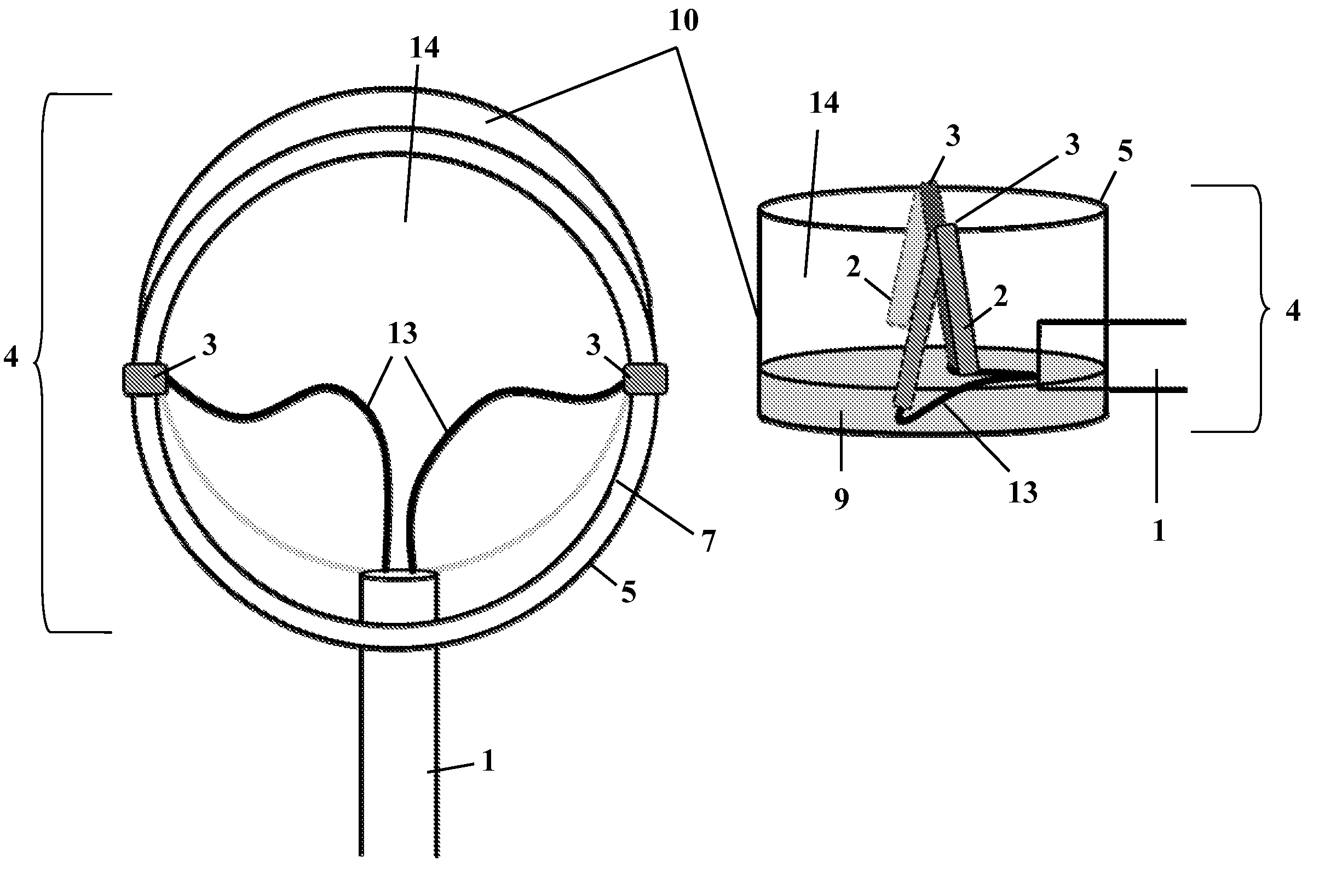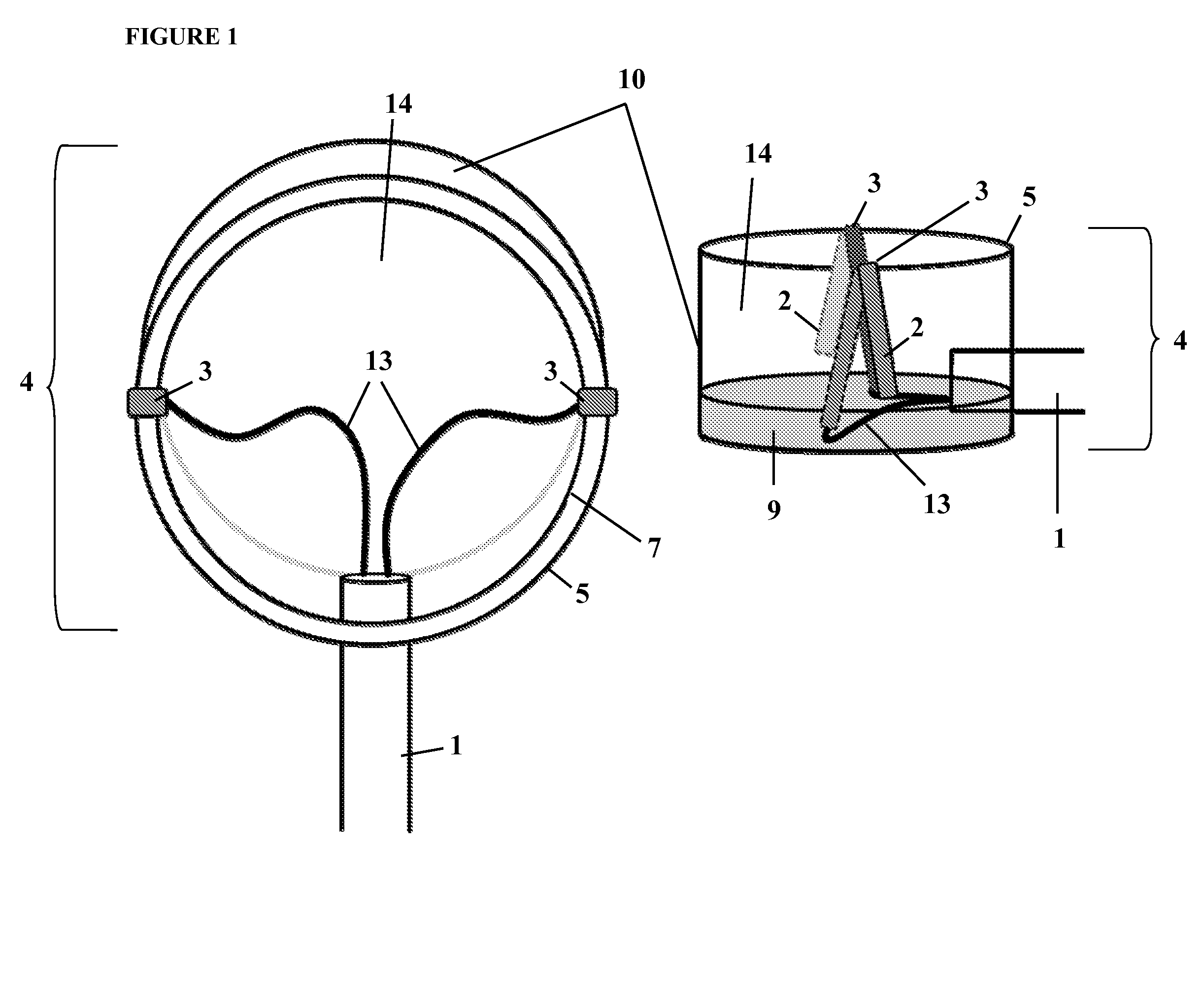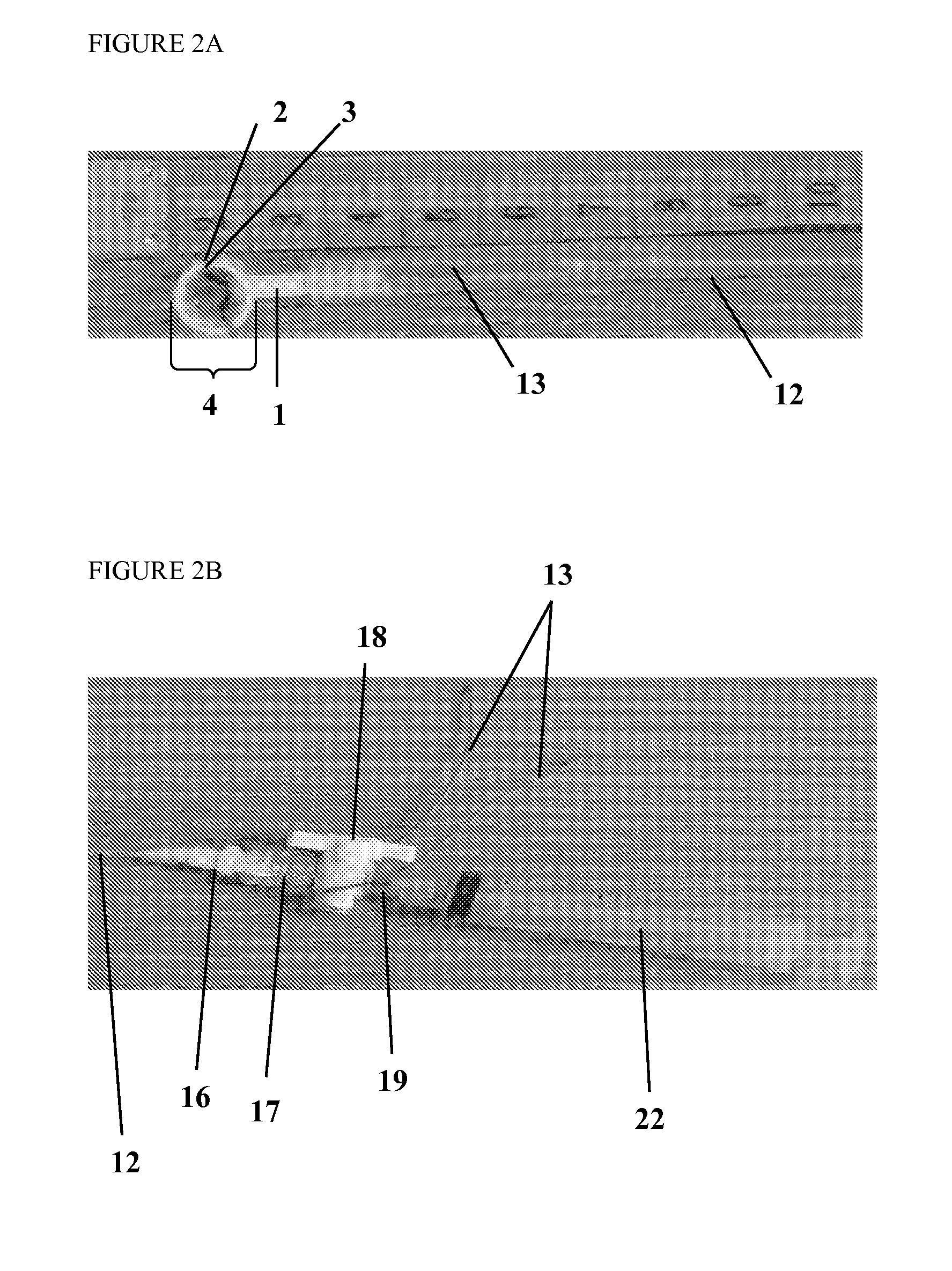Probe for diagnosis and treatment of muscle contraction dysfunction
a muscle contraction and muscle technology, applied in the field of probes, can solve the problems of insufficient design of adhesive surface electrodes that are commonly used for emg recordings of other skeletal muscles, ineffective adhesion in moist mucus membrane environment, and only useful surface electrodes
- Summary
- Abstract
- Description
- Claims
- Application Information
AI Technical Summary
Benefits of technology
Problems solved by technology
Method used
Image
Examples
example 1
[0092]A study was performed to determine the reliability and validity of Probe 1 of the invention when recording surface EMG from the PFMs in healthy women. Probe 1 was also compared to a commonly used electrode (Femiscan™; surface area 1.75 cm2 each). The Femiscan™ device was re-wired to record differential configurations from the right and left PFMs separately since this is a more appropriate way to record such muscle activation.
[0093]Reliability refers to between-trial reliability for the probe. Between-day reliability is not expected to be high for any EMG data since there is, among other factors, inherent variation in electrode position relative to active muscle fibers. Validity refers to the effect of the hip adductor (Add) and external rotator (ER) contractions on the signal recorded at the PFMs. In this case we were particularly interested in determining whether the recorded EMG signals come from the PFMs or represent crosstalk from nearby muscles.
[0094]Twenty healthy nullip...
example 2
Determination of Motion Artifact
[0107]A study was performed to determine whether EMG recordings made using the novel probe described herein have less motion artifact contamination than the Femiscan™ electrode, a commercially available electrode reconfigured to incorporate two differential EMG channels (one on each side of the vaginal wall) using stainless steel bars mounted on a cylindrical probe.
Methods:
[0108]Eighteen healthy continent women with no signs of pelvic floor muscle dysfunction (such as urinary or fecal incontinence, pelvic pain disorders, or low back pain) were recruited from the Kingston (Ontario, Canada) community. Each participant performed ten repetitions of a maximal effort coughing task in the standing position with both the Femiscan™ probe and Probe 1 of the invention (see FIG. 1) in situ, with the probes tested in random order. EMU data were recorded from both sides of the vaginal wall using Delsys™ AMT-8 pre-amplifiers (bandwidth 20-450 Hz, input impedance >10...
example 3
Determination of Crosstalk
[0116]A study was performed on three volunteers (healthy, nulliparous women) to determine whether EMG recordings made using Probe 4 have crosstalk contamination from the obturator internus muscle (Exemplar data are presented in FIG. 1). EMG data were recorded from PFMs during a contraction of the hip external rotators, which should elicit obturator internus activity but not pelvic floor muscle activity. The following data were recorded: pelvic floor muscle EMG data were recorded using fine wire electrodes located in the right pelvic floor muscle (gold standard) (top panel of FIG. 11); obturator internus EMG data were recorded using fine wire electrodes placed in the right obturator internus muscle (second panel from top in FIG. 11); pelvic floor muscle EMG data were recorded simultaneously using Probe 4 (bottom two panels in FIG. 11; third panel from top shows data recorded with the probe located on the left side of the vagina, and the bottom panel shows da...
PUM
 Login to View More
Login to View More Abstract
Description
Claims
Application Information
 Login to View More
Login to View More - R&D Engineer
- R&D Manager
- IP Professional
- Industry Leading Data Capabilities
- Powerful AI technology
- Patent DNA Extraction
Browse by: Latest US Patents, China's latest patents, Technical Efficacy Thesaurus, Application Domain, Technology Topic, Popular Technical Reports.
© 2024 PatSnap. All rights reserved.Legal|Privacy policy|Modern Slavery Act Transparency Statement|Sitemap|About US| Contact US: help@patsnap.com










